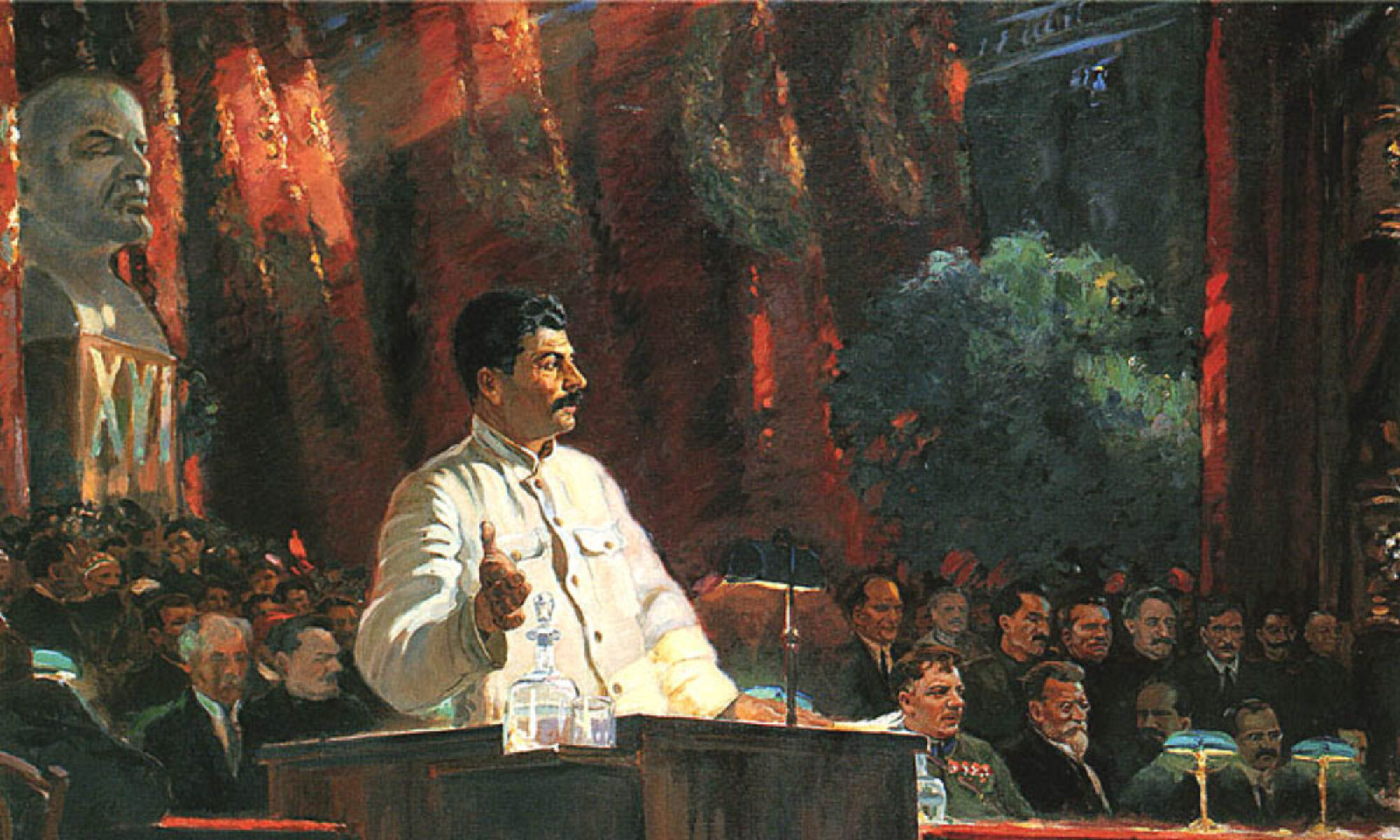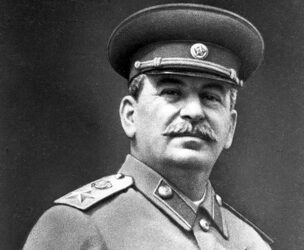“Sure people will fall. But we’re building blast furnaces all the same, aren’t we?” (Scott 21) The author uses this statement and the visuals of the injured workers to make the clear case that this was a very dangerous build. Then when you read into the quotes and stories a little bit more, it seems that there was a general disregard of human life. The only thing that mattered was building the factories and making the steel that needed to be made. They are “mostly plowboys” so what does their deaths matter away way? (Scott 21) These values seem to be very characteristic of the Stalin period, where advancement came at any cost. There was almost an expectation of suffering and death built into these grand building projects. Was the suffering worth it to build these factories? Does the general disregard for human life line up with traditional socialist values? Would the deaths have been more notable if they were engineers and not plow boys.
The Real Stalinist Experience
At the beginning of the story from Arina’s Children, Chapter 15, page 221, the narrating girl says, “My father became the best hunter in the kolkhoz, and my mother, the first shock-worker. Nobody worked harder than she did. No other family had as many labor days as we did. That’s when some people started envying us and wishing us ill–people, like Bugarikha, who pretended to be activists but only liked to talk, not work.” so when her family is exiled, she does not understand why. Although the political system has nothing to do with the young girl, it will change her life forever. Dekulakization was running rampant through the Soviet Union, and her parents knew it was coming to the village. Although they had many kids, they had been working so hard for many years that they believed that they would be protected. Do you think the bewilderment and fear that this young girl is feeling are entirely the fault of her government, or does any of the responsibility of her parents for not taking any of the warnings?
The Treatment of a Solider.
in the second reading, in the introduction, a man comes back from war. Now this is not the center focus of the story, but I thought it was an interesting detail. When you compare how many people in the military are treated here, they are given resources to start their life, pay, benefits, etc. in most normal circumstances. However, in this instance, the soldier had to come back and “build his life”. What does this show about the Russian treatment of soldiers? Also, how does that contribute to the building of character in Russian eyes? The view of a peasant is not the best, but does that justify this?
The Peasant Rebels
Stalin attempted to pacify the peasant households by calling for “a cow in every peasant household.” Not only was he trying to appease the peasants but he was also using a diversionary tactic to take attention away from the massive starvation among the peasant households. What he didn’t count on was, as Daniel Field suggests, “peasants appear at times to have exploited official preconceptions about themselves for their own ends.” How were the peasants, and particularly the peasant women able to take advantage of their encounters with Soviet authority?
A Message To The West
The excerpt clearly makes the case that the lives of the minority population are treated better in the Soviet Union than elsewhere in the West. The author then answers the burning question, what was life like before and how did the Soviet Union get to such a place of equality? It is answered with, “Before [the transition to communism], Kurbanov said, racial persecution and segregation, the natives treated like dogs. Now, that is finished, and Russian and native, Jew and gentile, white and brown, live and work together. Before, no intermarriages of white and dark, now there are many. Before, Kurbanov himself was a herd-boy in the mountains. Now, he is a member of the Party and the Chairman of a city soviet” (Hughes 74). The excerpt credits the equality that the author is seeing to the transition to communism, where equality was required and celebrated. This work was published in the Soviet Union but the message seems to be directed at the minority population in the United States. The message seems to be that communism would create a state of equality in the United States. Do you think that with the history of the United States that communism would create equality? Is it possible that there was an audience in the Soviet Union still seeking equality? Was it a good idea to target a minority population to spread communism?
Soviet influence on Central Asian Women
Jahon Obidova is the definition of a Communist success story. Communism saved her from a life of abuse and poverty and allowed her to become an influential political figure. Kamp says, “The Communist Party Created the conditions for her to emerge as an activist and a leader. In the process, she broke every one of her own society’s gender conventions” (315). However, while we have such an exemplary example of equality within Communism, we also see how their actions didn’t always promote equality. With the Hujum, the Soviets ran into the fallacy that saying women could unveil meant that it was safe and that society was willing to accept this. As we see within the readings, not all women were comfortable unveiling and those who did were not free from societal persecution. While the Communist influence did intend to protect the unveiled women, they couldn’t reasonably combat decades of societal traditions.
While Soviet influence created powerhouses such as Jahon Obidova, we cannot ignore the damage and pain that many women faced by their influence, especially during the Hujum.
What Went Wrong
In the introduction to the chapter we read from Marianne Kamp, she says “The Hujum as originally envisioned focused on enforcing laws thatgave women equality, creating literacy programs and bringing womeninto the labor force. Communists in Central Asia and the Caucasus were supposed to attack every obstacle to women’s equality” (150). On paper, these few sentences alone do not all that bad, but that is where my question comes in. Having read about the experiences of people who lived during the time, it is clear that the policy was flawed. What are some things the Soviet government may not have considered when it implemented these policies?
Hujum
The Hujum was a movement for Central Asian Muslims and Caucasus in order to more easily integrate them into soviet life and the workforce. Using equality laws, literacy programs, and bringing women into the labor force, the Communist Party leadership in Moscow launched the campaign. The main way of supporting the campaign became unveiling of the women’s paranji’s, and although this was meant to be a nonviolent practice, it quickly took a turn. Women who unveiled and showed support were in danger of being assaulted or killed. Rabhar-OI said, “And there was that actress. She was Halima’s understudy. Her husband bit off her nose, just like that”(pg. 159) this was meant to force the woman put her paranji back on. Would you take a risk the way these women did for something you cared about? What would you do if your spouse disagreed?
The Light Behind the Soviet Union
The typical stereotype of Russia is pretty bleak. I even saw a funny post about someone saying “I do not like syrup on my pancakes” and the response being “where are you from? the Soviet Union?”
Again, Russia is a bleak place with an evil dictator that just makes people suffer. However, in Russia’s People of Empire : Life Stories From Eurasia, 1500 to the Present, the stories are more the opposite. On page 311, it says “Rabfak schools, which were first founded in Russia and then spread to other parts of the Soviet Union, sought to educate, and politicize, the urban working classes. This move suggests some of the ways that Obidova’s own marginal status shaped her opportunities. Burnsheva;s teachers’ school for Uzbek women became a very important institution in Soviet Tashkent, attracting the daughters of the urban intelligentsia..”. A few lines before we read “within four years, she ‘learnt to read and write and divorced her husband, who had discovered her whereabouts and was constantly threatening to murder her'”.
Even with my own studies of communist East Germany, once the wall fell, people still stayed in the East when you would think they would want to run as fast as possible.
These stories show the hope behind the Soviet Union where we have just been depicting it as a group of abused and brainwashed group of people.
Was Russia actually caring for its expansion or was it all for business? Why do you think people wanted to stay in the Soviet Union and work?
A New Soviet Renaissance
1926 saw a cultural rebirth of the Soviet Union. Many changes occurred, primarily how women were perceived and treated, the “Great Leap Forward” described by Marianne Kamp would bring women from other cultures and backgrounds and have them join the modern society of the Soviet Union. This would help with certain issues that these women would face in their daily lives, but soon enough the Communist Party would act as the arbiter for these women . On one hand, at the Uzbekistan Communist Party Central Committee meeting some of the members were in strong support of freeing women from their veils (symbols of slavery) but, “in regional meetings Communists supported a more subtle unveiling movement, with unveiling meetings only for wives of responsible workers” (Pg. 164). Do you think this created the idea that instead of listening to your spouse/family, that now women had to listen the Party, and had to be subservient to the Party?

